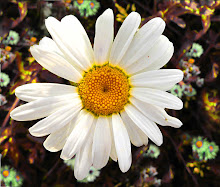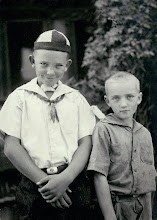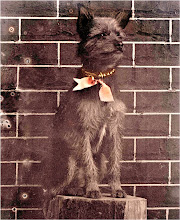
"This is an 8x12 infrared digital print taken with a dedicated infrared camera. The internal filter turns anything with chlorophyll white and the result is an image that looks magical and surreal."
This is the explanation the artist
re4madoprints gives under the wonderful photo of the Japanese garden above.
I remember as a student at the University, the first time I saw some prints that Ted Orland did that were infrared in my advanced photo group and I was amazed and intrigued by the process.. but because I was heavily into my hand painting I never got around to trying this film which had to be kept cool and you worked pretty strict sometimes with it.. I was in my devil may care photo phase and missed a sparkling opportunity to try it. It is never too late though and I hope to give this a whirl in the near future. This film works best with foliage as it turns everything green white.
Here is what I found online about the film, "In infrared photography, the film or image sensor used is sensitive to infrared light. The part of the spectrum used is referred to as near-infrared to distinguish it from far-infrared, which is the domain of thermal imaging. Wavelengths used for photography range from about 700 nm to about 900 nm. Usually an "infrared filter" is used; this lets infrared (IR) light pass through to the camera, but blocks all or most of the visible light spectrum (the filter thus looks black or deep red).
When these filters are used together with infrared-sensitive film or sensors, very interesting "in-camera effects" can be obtained; false-color or black-and-white images with a dreamlike or sometimes lurid appearance known as the "Wood Effect."
The effect is mainly caused by foliage (such as tree leaves and grass) strongly reflecting in the same way visible light is reflected from snow. There is a small contribution from chlorophyll fluorescence, but this is extremely small and is not the real cause of the brightness seen in infrared photographs.
The other attributes of infrared photographs include very dark skies and penetration of atmospheric haze, caused by reduced Rayleigh scattering and Mie scattering, respectively, compared to visible light. The dark skies, in turn, result in less infrared light in shadows and dark reflections of those skies from water, and clouds will stand out strongly. These wavelengths also penetrate a few millimeters into skin and give a milky look to portraits, although eyes often look black."
There is the lesson for the day on a very wonderful and magical film process called infrared.
I hope you find time to click on the title to go to the store of this artist on Etsy and see some of her wonderful and magical work... I think she is one of the best I have seen and I love her choices for subject!















No comments:
Post a Comment